Types and varieties of spathiphyllum
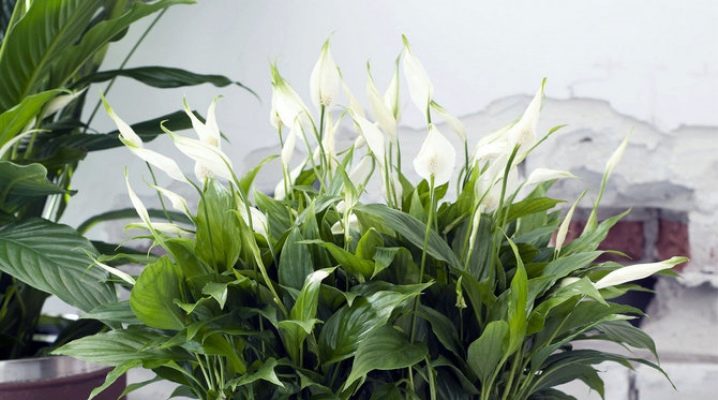
The spathiphyllum plant was described in detail by the botanist G. Wallis in the 19th century. In nature, culture is located on the coast along various bodies of water, on slightly acidic soil, in the undergrowth of regions with a tropical climate. New breeding varieties, bred since the mid-60s of the last century, attract flower growers with various shades, shapes, sizes, and the presence of a light aroma.
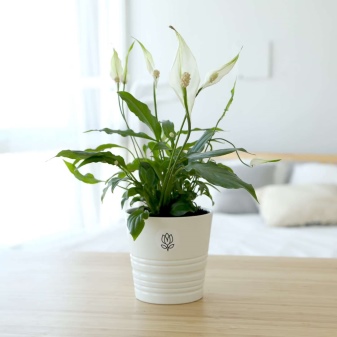
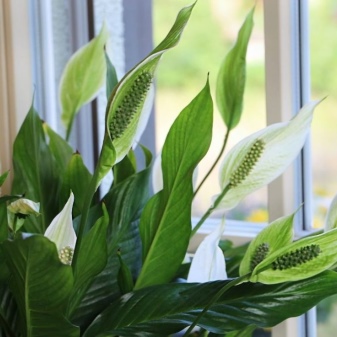
Description
"Women's happiness" - as the common people call spathiphyllum. The culture belongs to the aroid family, preserving foliage all year round. The leaf plates of the flower are oval, elongated, lanceolate, with visible veins, the outer side of the leaf is glossy. The culture has a short stem, creeping along the ground, which gives the impression that the leaves of the spathiphyllum grow directly from the ground.
A feature of the appearance of the culture during the flowering period is the inflorescence, consisting of an oblong cob, covered with tubercles, and a light white bracts, called a veil.
Indoor spathiphyllum is represented by hybrid forms of wild varieties of culture. It is used for landscaping at home, work premises, in landscape compositions.
On Russian windows there are common species Spathiphyllum Floribundum, Spathiphyllum Wallisii.
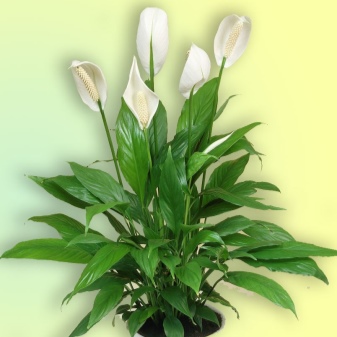
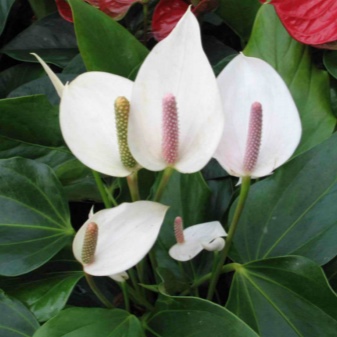
Main types
Among the many forms and colors of spathiphyllum, the classic varieties of the flower stand out, from which breeders have bred numerous hybrid varieties.
Profusely blooming
Spathiphyllum Floribundum - with light leaves, the petiole of the plate is about 10 cm. The leaf grows up to 20 cm in length, the young shoots are bright, light in comparison with mature shoots. Peduncles are located above the leaf mass. The perianth is small, the average size is 5 cm, light white. The culture is distinguished by long flowering every year.
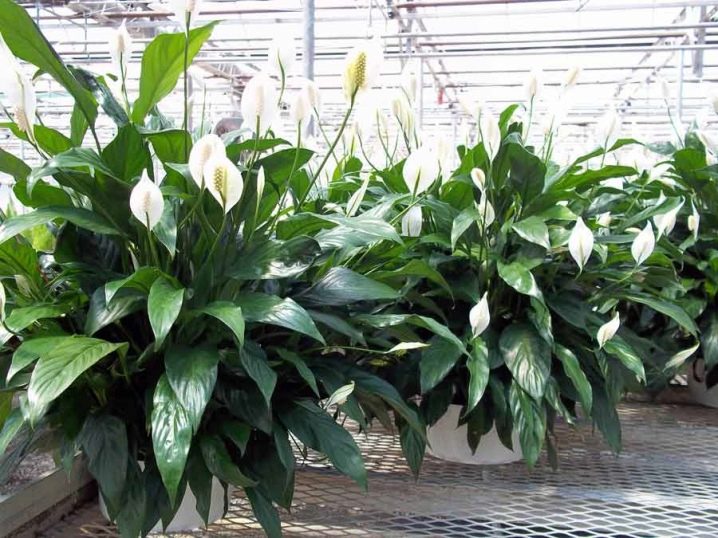
Pleasant
Spathiphyllum Blandum is distinguished by the structure of the leaf plate. A large culture that grows in Suriname, the leaves are elliptical, veins stand out on the surface of the plate. The length of the leaf reaches 32 cm. The petioles are elongated, commensurate with the leaves, attached to the creeping underground stem of the flower.
The bract is equal in length to the leaf, at the end of the peduncle there is an inflorescence of a pale yellow color.
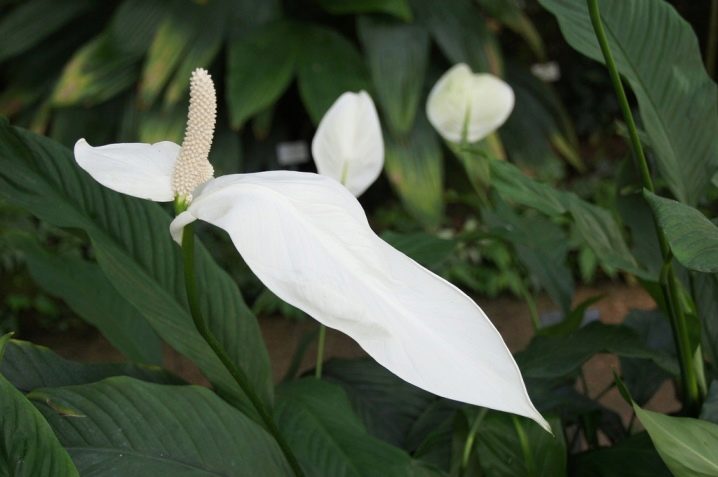
Spathiphyllum blooms pleasantly regularly, when in favorable home conditions, it is capable of repeated constant flowering.
Canniferous
Spathiphyllum Cannifolium is characterized by narrow, long leaves (40 cm). The bract is white, the inner side is painted in a greenish tint, up to 22 cm long. The coverlet, on average, is several times larger than the cob, and is yellowish-white. A feature of cannoli spathiphyllum is the presence of a pronounced aroma and an altered structure of the cob, which has a smooth structure. In the wild, spathiphyllum is found in rainforests as well as Trinidad, South America.
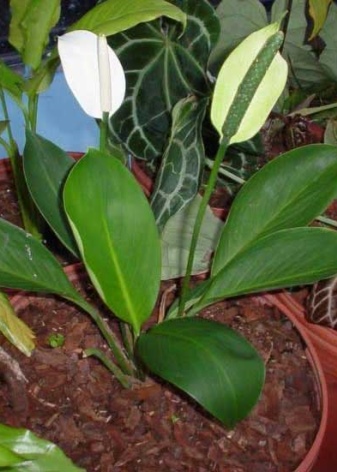
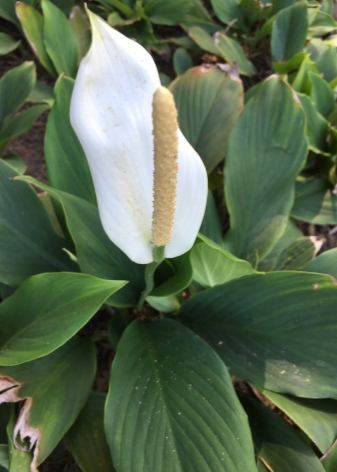
Spoon-shaped
Spathiphyllum Cochlearispathum was discovered in Brazil. The flower reaches a meter in height, with shiny oblong leaves. The width of the leaf plate is 10-15 cm, the length is 35-40 cm, the color is emerald green. The petioles of the leaf plates are elongated, can reach 70 cm in length. Spathiphyllum got its name because of the shape of the bedspread, which outwardly resembles the concave shape of a spoon. The bedspread is classic white, the ear turns dark green as it ripens.
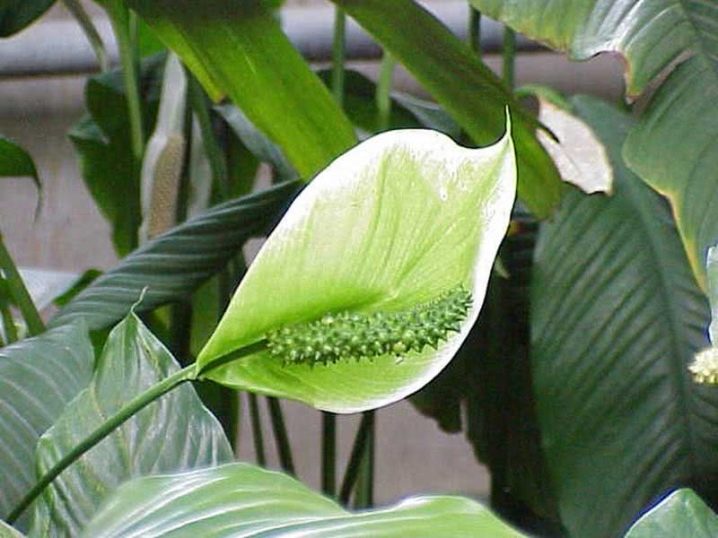
Wallis
Spathiphyllum Wallisii is named after its discoverer, G.Wallis. The culture is considered unpretentious in care, due to which it is widespread. The wild plant became the progenitor of modern varieties of home flowers. The Wallis spathiphyllum is small in size, the maximum height is 40 cm, which gives it an advantage for growing in an apartment.
The native of Colombia forms oblong leaves. The petioles are flexible, over time their shape becomes more sinuous, which is why the leaves take an inclined position. Inflorescences up to 5 cm in length, wrapped in a white or greenish "hood", as the ear ripens, the cover turns completely green. The ear itself is pale yellow, then turns green.

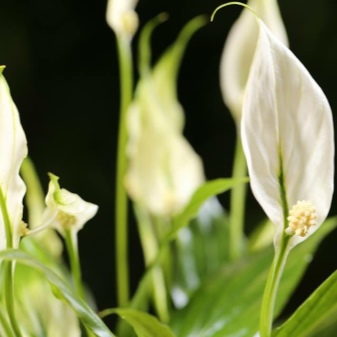
A characteristic feature of Wallis spathiphyllum is a long flowering that occurs in spring and ends in autumn.
Heliconial
Large variety of spathiphyllum, with rich dark green leaf blades. The plant can grow up to 100-120 cm in height. The leaves are glossy, pleasant, oblong, up to 25 cm wide, up to half a meter long, the edge of the leaf plate has a wavy shape. The inflorescence is large, up to 10 cm, white, darkens during maturation. The cover is larger than a cob, white, oval.
Petioles are one meter long on average. The plant prefers diffused light, constant spraying with warm water, moderate watering. Able to grow in a shaded area. These qualities allow you to grow a crop at home without any problems.
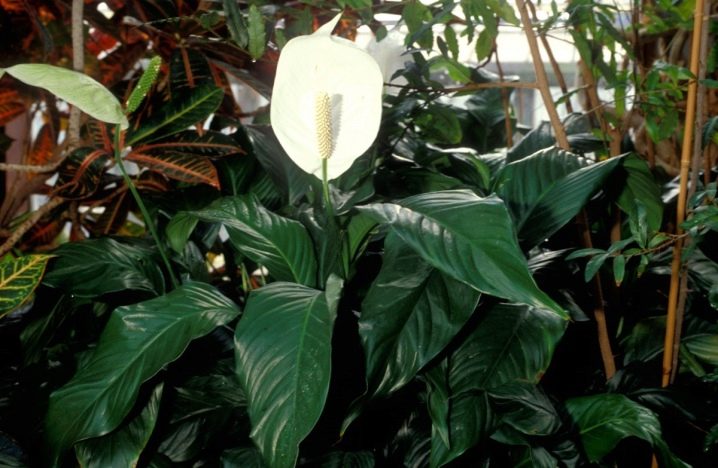
Classification of varieties
These varieties are hybrids of classic crops and real wild plants, intended for growing at home. They are distinguished by increased decorativeness, various forms and a long flowering period. Plants get their names from the place of origin of the variety, some crops are named after great people.
Mauna loa
Spathiphyllum is native to Colombia. Mauna Loa is a culture with an elliptical concave perianth that protects a tiny ear. The leaves are pointed. The stem is short, underground. Peduncles are located above the foliage, the average shoot length is 22 cm. The flowering period is long, sometimes constant. Cut flowers retain their original appearance for a long time, being in a container with water.
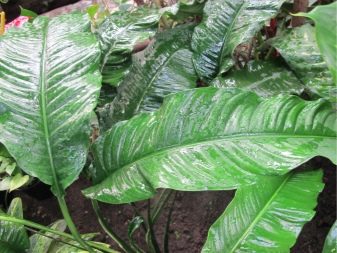
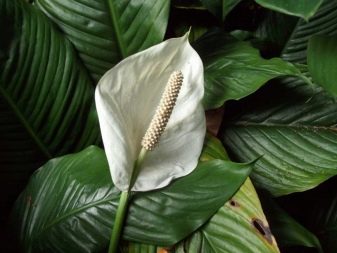
Chopin
Spathiphyllum Chopin is a widespread culture for landscaping areas, premises for various purposes. The size of the bush reaches 42 cm. The leaf plates are shiny on the outside, the veins are easily visible, the tip forms a sharp spine. The perianth is white, elongated.
The culture in the first half of the day spreads a subtle aroma, making the flower even more attractive to growers.
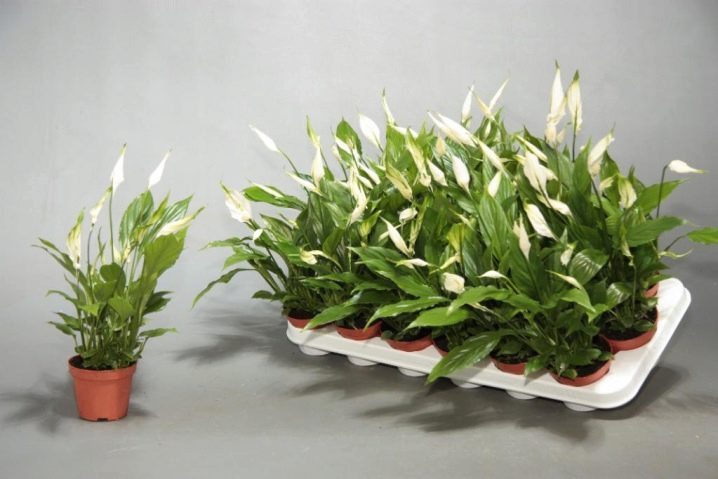
"Domino"
Spathiphyllum Domino is a variegated variety, leaf plates are colored in whitish-milky green stripes. To maintain the variegation of foliage, the crop should be placed in places where a large amount of diffused sunlight is available. When kept in the shade, the leaf plates lose their pattern and become uniformly colored green. "Domino" is a low-growing bush, no more than 30 cm in height, in the morning it spreads a light aroma, moisture-loving, afraid of drafts.
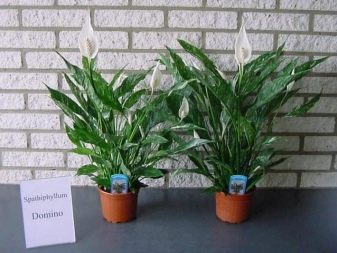
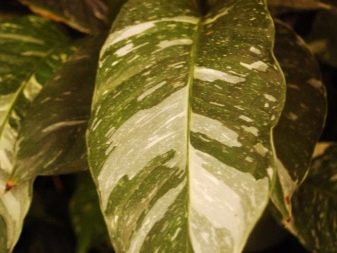
"Picasso"
Dutch hybrid variegated variety derived from Wallis's spathiphyllum. Milky shades cover a large area of the leaf plate. Since Picasso is a variegated variety, the crop requires careful maintenance and adequate lighting.

"Sensation"
Tall ornamental bushes (150 cm) with large dark leaves. The size of the leaf plate exceeds 70 cm in length. Large inflorescences of "Sensation" of a dazzling snow-white tone over time are painted in greenish shades. The ear is smooth. Flowers after cutting retain their decorative effect for a long time.
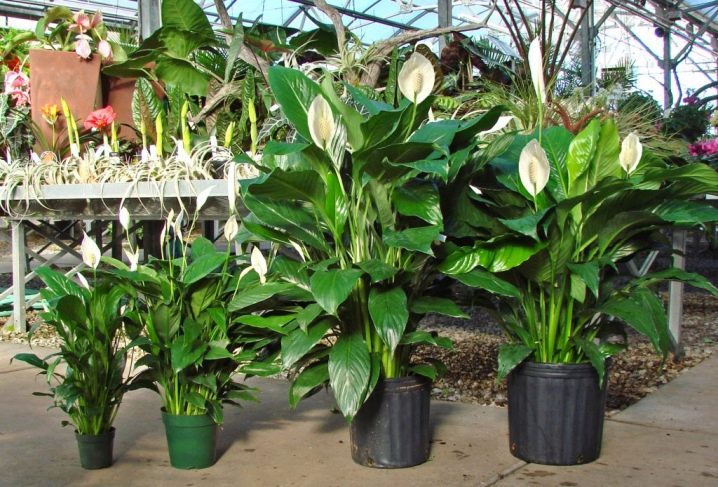
"Sweet Silvio"
A lush hybrid with a height of about 75 cm. The inflorescences are distinguished by a graceful shape.It is used for multilevel decorative gardening, placing the culture after miniature varieties, for example, "Strauss", which grows no higher than 30 cm.


"Alana"
Massive culture of half a meter in height. The leaves are practically standing, do not droop as they grow. The leaf plate is dense to the touch, green in color. The bract on the back has a vein that paints the center of the veil in a light green color.
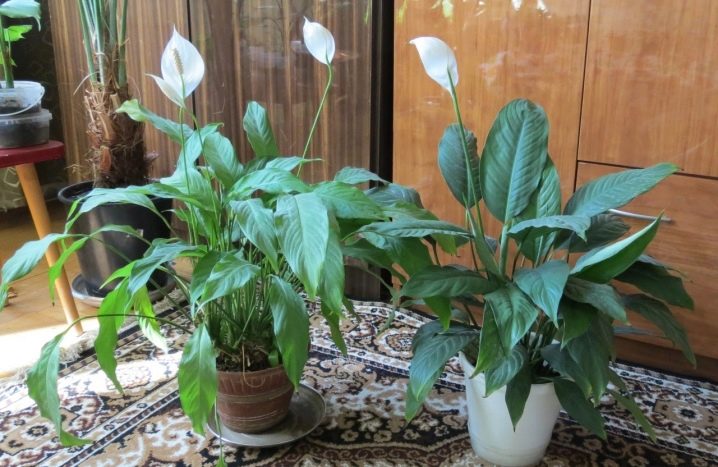
"Cupido"
"Cupido" are Wallis spathiphyllums grown in the Netherlands. The plant has emerald foliage, the covers of the inflorescences are gracefully concave. In circulation, the culture is unpretentious, suitable for novice flower growers to get acquainted with the flower.
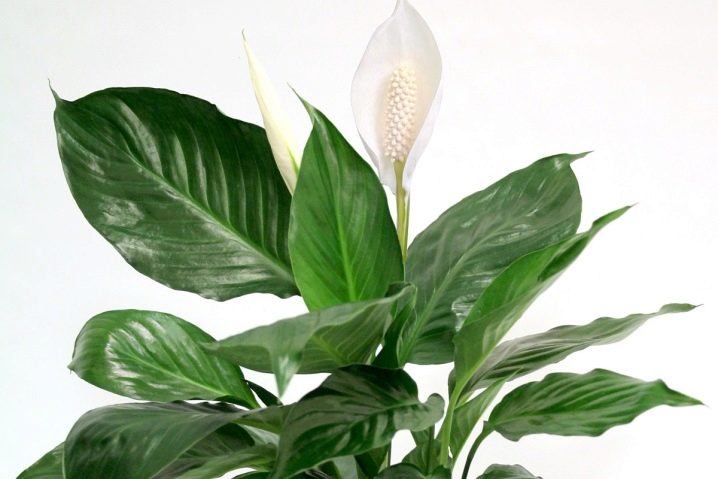
Verdi
Medium-sized plant, maximum height 70 cm. The culture belongs to the sun-loving, but with prolonged exposure to rays, burns form on parts of the plant. Whimsical to care for. The temperature regime for keeping "Verdi" in the summer season is 24-27 degrees Celsius, in the winter season - no higher than +16. Does not tolerate drafts, sudden temperature changes. Watering requires moderate.
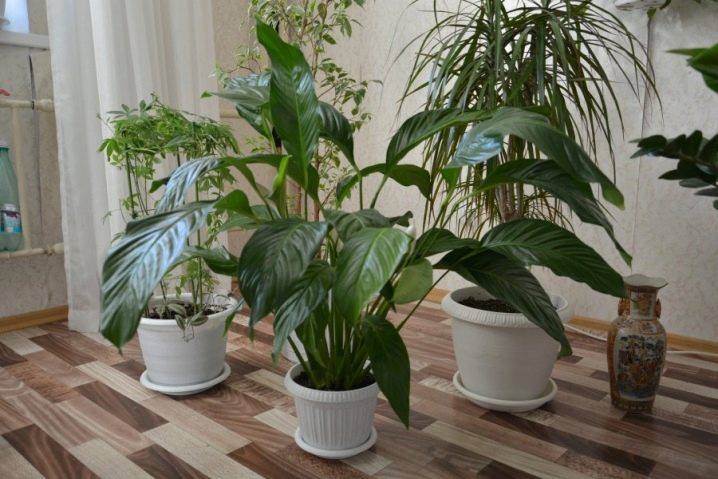
"Haiti"
A rare variety, fastidious in care, needs timely watering, constant feeding. The bush is low, belongs to the dwarf species, the leaves are slightly drooping, the central vein is light green. Peduncles are standard, rise above the total mass of foliage or are at the same level with it. The bedspread is snow-white. The ear is lumpy, cream-colored.
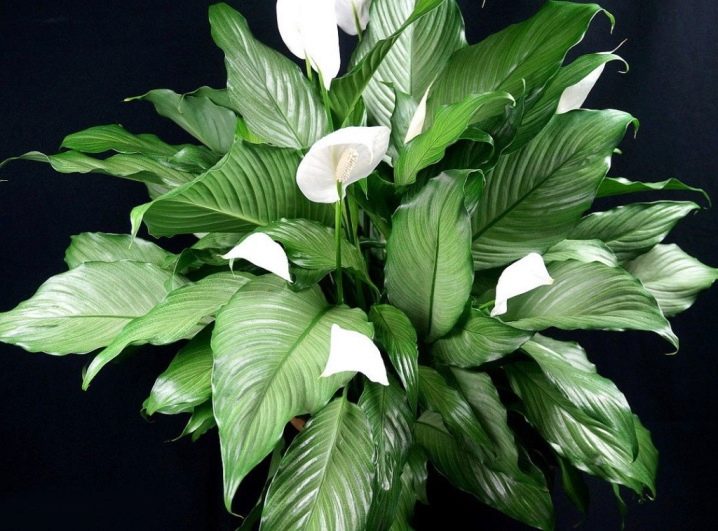
Japanese
An undemanding bush with elongated peduncles to care for. Japanese spathiphyllum blooms twice a year, inflorescences are able to thin out a weak pleasant aroma. The foliage is bright emerald, drooping, with visible veins, the edge of the leaf plate is wavy. The length of the peduncle is 50-70 cm, the cob is tuberous, the bract is light, elongated, oval, with a lime vein in the center.
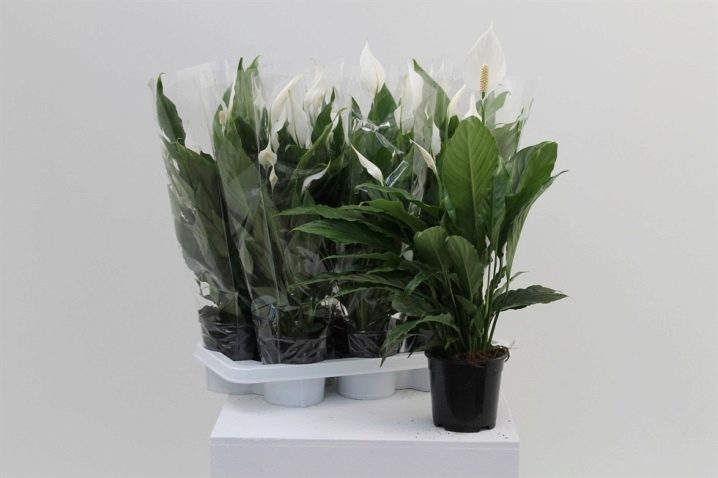
"Sweet Lauretta"
The variety was born in 2001. The bush is lush, the width is almost equal to the height - 80 cm. The flowering period begins one month after the petiole has taken root. The leaf plates are elliptical, no more than 35 cm long. The cover is large, the size of a palm.
This variety is used as a single plant for landscaping home and other premises.
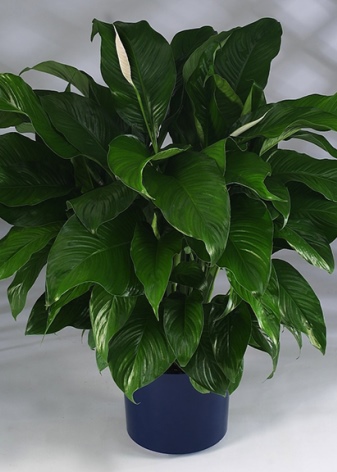
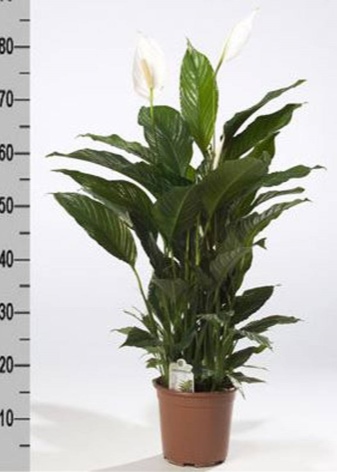
Gemini
A lush variegated variety, leaves with sharp ends have dark and light spots in a green range, the edge of the plate is curved. Demanding on sunlight and care.
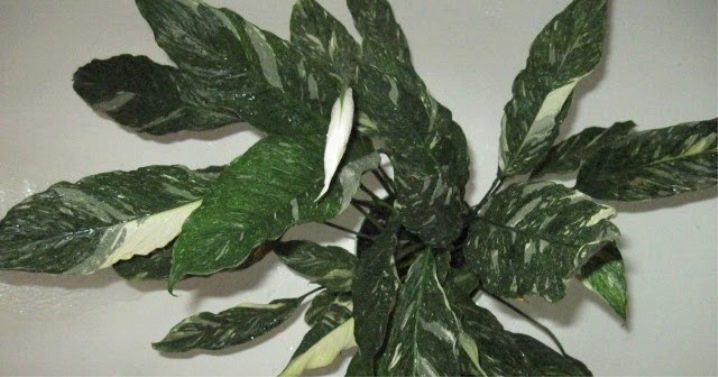
"Strauss"
A dwarf variety, whose height does not exceed 30 cm. The leaf plates are elongated, the bract is classic white. The flowering period occurs twice a year. Looks organically in single and group plantings, tolerates partial shade, needs diffused lighting.
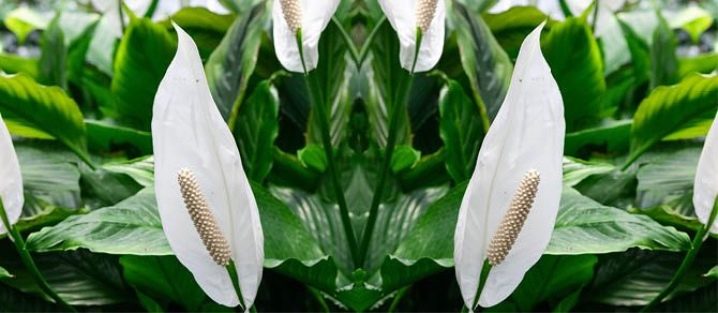
Sweet Chico
The main feature of Sweet Chico is the absence of a stem. The height of the culture is about 70 cm. The leaves are large, grow directly from the root, and are located on erect petioles. The outer side of the sheet is glossy, covered with straight veins. Peduncles emerge from the potting mix. During the flowering period, the bush is abundantly strewn with peduncles. The ear is pale, the bracts are snow-white, elongated, after a while the color changes to greenish.
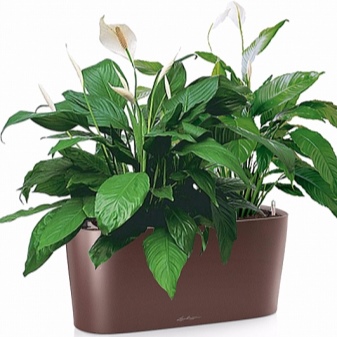
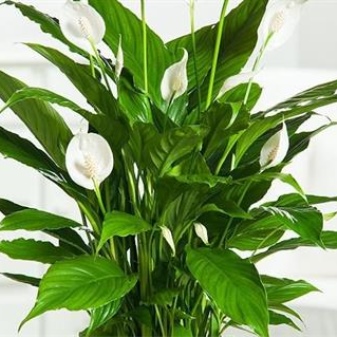
Royal
In another way - gigantic. The culture is massive, the maximum height of the royal spathiphyllum is 150 cm. The leaves are elongated, half the width of the length. The leaf plates are thick, of a rich dark emerald tone, the edges are curved, the front side is shiny. The inflorescence consists of a tuberous cob, an oval perianth of a white shade.
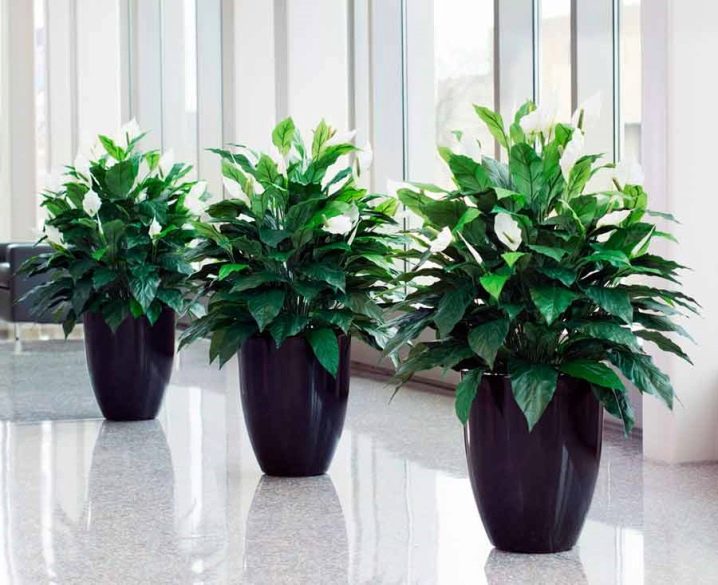
To size
According to the criteria of size, the crop is divided into composite groups, consisting of varieties that meet the requirements of the category.
The most massive representatives: spathiphyllum spoon-shaped, gigantic or royal, cultivar "Sensation", heliconials. A large, large shrub suitable for all areas and premises.
Average - varieties "Sweet Lauretta", "Sweet Chiko", "Alana".
Dwarf or mini-varieties spathiphyllum are specially bred for home use. They are distinguished by an elongated bush without drooping leaves.Low-growing varieties are unpretentious in care, rarely get sick, bloom profusely, for a long time. Miniatures include: "Strauss", "Haiti", "Domino", "Chopin" and others.
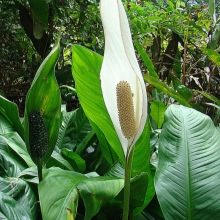

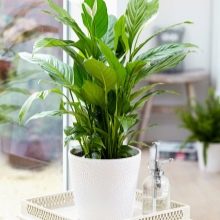
By color
It is widely believed that spathiphyllum inflorescences, in addition to white, have a pink, red tint. In fact, this is not the case. Before buying a "red" rare spathiphyllum, you should understand the classification of the culture.
Dyeing the bedspread is possible only with the use of artificial dyes. In all types of spathiphyllums (hybrid and real), the bracts can only turn green. Crops that are closely related to the plant have colored perianths. Anthurium is such a relative. The bred varieties allowed anthuriums to have pink, burgundy, red bracts of different saturation. Outwardly, the flowers are similar to each other, but in the latter culture it is dense, flat, semicircular, almost completely open, with pronounced veins.
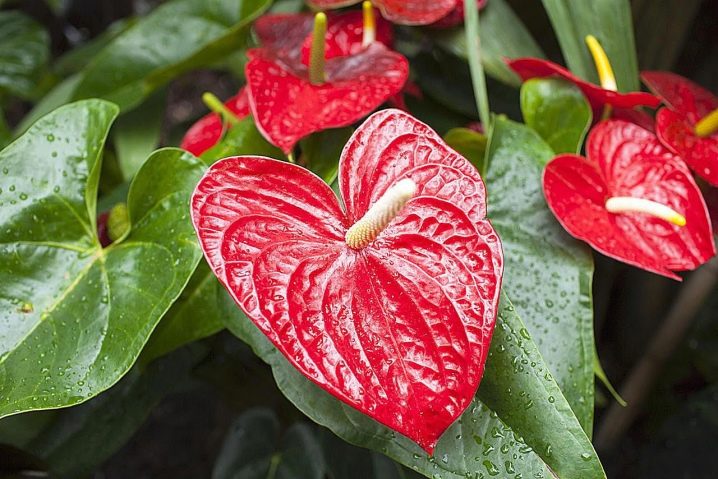
In the West, both plants have a common name - Peace Lily. Therefore, when buying a rare specimen, you should carefully examine the plant.
How to choose?
On the shelves of flower shops, all flowers look healthy and attract attention. However, the external impression can be deceiving, you should not take the first pot with a flower that comes across.
Let's figure out what you should pay attention to.
- Leaves. The leaf plates of a healthy culture do not have mechanical and other damage, defects, are uniformly colored in a green tint, with the exception of variegated varieties. There are no spots of any color, the sheet is dense, juicy, glossy.
- Shoots and inflorescences. Petioles, peduncles, ears, perianths are not damaged. Shoots are dense to the touch. Cob covers with no signs of wilting, dry ends.
- The soil. It is imperative to inspect the land in which the plant is located. From the temporary pot, you can slightly stretch the culture up to inspect the condition of the root system and how much the earthen lump is filled with roots. The soil should not give off unpleasant odors and be filled. The surface layers of the soil should not contain traces of mold, insect activity - cobwebs, "fluffy" raids.

Beautiful examples
In living quarters, culture acts as a decorative object. Plants are planted in snow-white pots of various geometric shapes, emphasizing the color of the bracts, shading the juicy tone of the foliage.
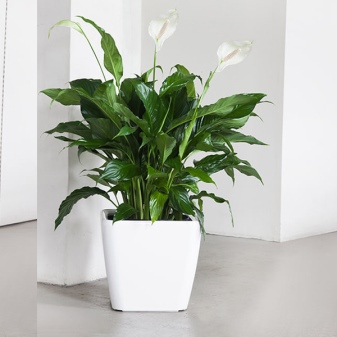

Flowers can be planted in a group planting in wide planting containers. This method is used to visually divide space into zones in residential and office premises, as decoration of various massive interior items: dining tables, dressers, and so on.


In landscape design, spathiphyllums act as a border or flower arrangement. They require high-quality drainage of the soil, its composition and care as the plant grows.
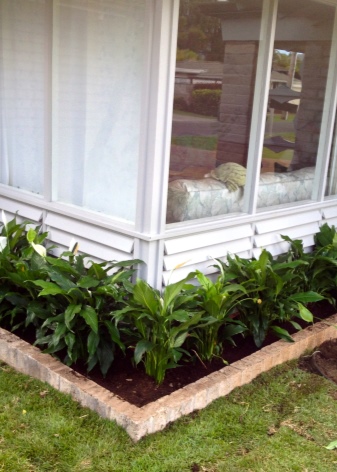

An overview of the types of spathiphyllum is presented in the following video.



























Thanks. A very informative article. I did not know about such a variety of Spathiphyllums. I have one bush, when it blooms - I don't pass by without admiring it.
The comment was sent successfully.